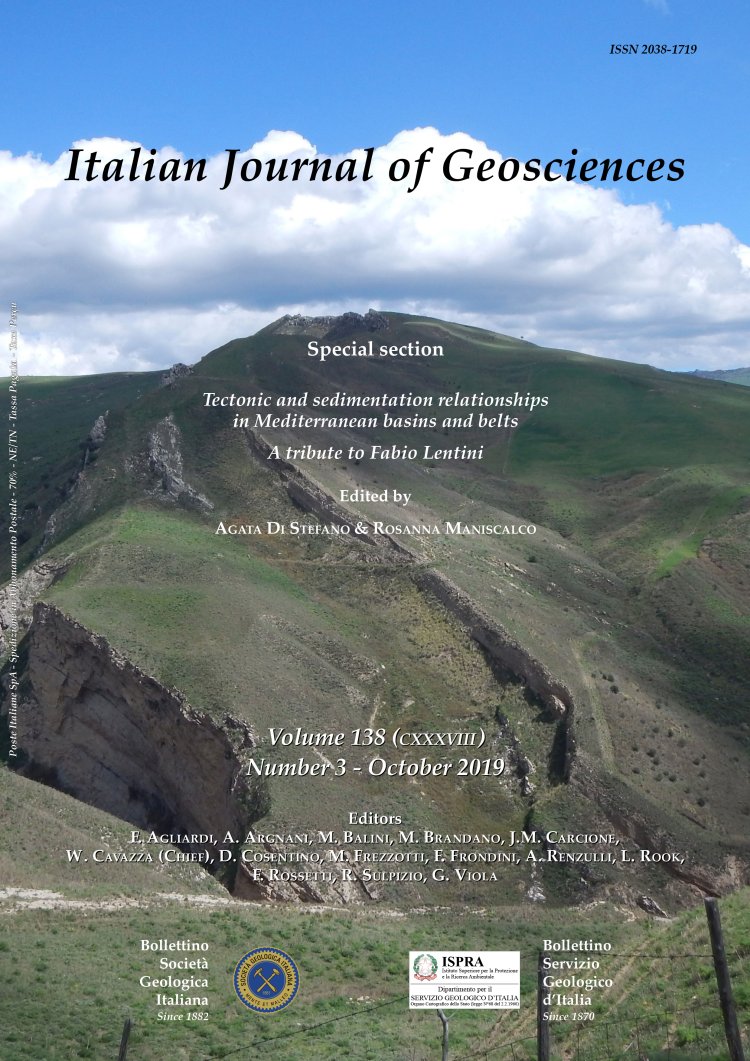
Stratigraphic and structural reconstruction of an offshore sector of the Hyblean Foreland ramp (southern Italy)
Salvatore Distefano (1), Fabiano Gamberi (2) & Agata Di Stefano (1)
(1) Università di Catania, Dipartimento di Scienze Biologiche, Geologiche ed Ambientali, Corso Italia 57, 95129, Catania, Italy.
(2) Istituto di Scienze Marine, Consiglio Nazionale delle Ricerche, via Gobetti 101, 40129, Bologna, Italy.
Corresponding author e-mail: salvodist82@unict.it
Volume: 138 (2019) f.3
Pages: 390-403
Abstract
Through the seismo-stratigraphic analysis of new high- resolution seismic data acquired along the southwestern offshore of the Hyblean Plateau, this work aims to improve the knowledge about the stratigraphic and structural setting in the marine area connecting the Hyblean Plateau Foreland to the Gela-Catania Foredeep.
Two main goals have motivated the acquisition of new seismic profiles along the southern coastline of Sicily, in the Marina di Ragusa offshore:
(i) to obtain a better comprehension of the Cenozoic stratigraphic and structural setting of the area, with a particular attention to the characterization of the Pliocene-Holocene sedimentary deposits and their areal distribution;
(ii) to identify, in the offshore area, the possible prolongation of the main structural lineaments outcropping in the hinterland (Scicli-Ragusa-Irminio Line), and verify the presence of structures, responsible for the tectonic activity affecting the area.
Our model shows that an extensional fault system, characterized by a main NE-SW orientation, affects the highly deformed Oligo-Miocene, or older, substratum, originating structural highs and down-faulted sectors. These faults are inferred to record the early history of the Scicli Line and of the polyphase kinematic evolution of the N50° oriented regional fault systems.
The Gessoso-Solfifera deposits (Messinian, Late Miocene) have been recognized in several sectors of the study area, showing a very peculiar seismic facies, and occupying deep erosional channels probably resting within down-faulted sectors. This feature is in good agreement with isolated onshore areas of the Hyblean Plateau (Licodia Eubea and south Vittoria villages) where the Gessoso-Solfifera deposits are associated to normal faults, thus documenting that Messinian evaporites are not restricted to compressive tectonic setting, such as the marginal sub-basins and the thrust top mini-basins of the Appennine-Maghrebian belt.
A peculiar seismic facies has been associated to the Trubi Fm., unconformably lying upon the older succession.
The undeformed seismic units, onlapping the older substratum, has been associated to the post-Trubi-Holocene deposits, arranged into seven seismic units that reflect the youngest depositional evolution of the nearby Catania-Gela Foredeep. These deposits, generally represented by plane-parallel seismic facies, are in turn separated by an unconformity highlighted by an onlap termination of the yougermost terms upon the older. In some cases they are interrupted by gas rising from the deeper succession that reaches, at times, also the seafloor.
Keywords
Get Full Text